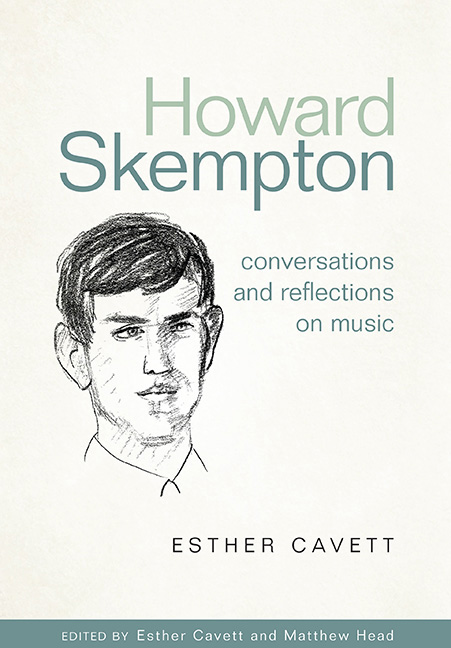Book contents
- Frontmatter
- Dedication
- Contents
- List of illustrations
- List of contributors
- Preface
- Roles and acknowledgements
- Introduction
- Editorial conventions
- Timeline
- Chapter One Histories
- Chapter Two Influences
- Chapter Three Pattern and shape
- Conversation Three: Becoming established, and the music after Lento (1990)
- Reflection Three, “Strangely simple”: Howard Skempton's composing
- Interval: Previously unpublished manuscripts
- Chapter Four Influencing
- Chapter Six Narrative and closure
- Appendix One Authorized worklist
- Appendix Two Discography of first commercially distributed recordings
- Select bibliography
- Index
Reflection Three, “Strangely simple”: Howard Skempton's composing
from Chapter Three - Pattern and shape
Published online by Cambridge University Press: 10 September 2019
- Frontmatter
- Dedication
- Contents
- List of illustrations
- List of contributors
- Preface
- Roles and acknowledgements
- Introduction
- Editorial conventions
- Timeline
- Chapter One Histories
- Chapter Two Influences
- Chapter Three Pattern and shape
- Conversation Three: Becoming established, and the music after Lento (1990)
- Reflection Three, “Strangely simple”: Howard Skempton's composing
- Interval: Previously unpublished manuscripts
- Chapter Four Influencing
- Chapter Six Narrative and closure
- Appendix One Authorized worklist
- Appendix Two Discography of first commercially distributed recordings
- Select bibliography
- Index
Summary
“So, as we ponder ‘What Next?’, let's hear it for strangeness!”
It was during a talk at Club Inegales, London in July, 2013, that Howard Skempton considered “what next for art music?” and mused briefly about the connotations of “strangeness” (Skempton, 2014, p. 52). He observed that one of his musical idols, Morton Feldman, had – according to Tom Johnson – declared that “music can imply the infinite if enough things depart from the norm far enough. Strange abnormal events can lead to the feeling that anything can happen, and you have a music with no boundaries.” Coming sometime after Feldman, composers in the early twenty-first century might be very conscious of the extent to which, technically speaking, “norms” still have more to do with the pre-twentieth-century, tonality-governed past than with the present, when “strangeness” might arise as much from emphasizing, even exaggerating such norms as from abandoning them. Music theorists have long acknowledged the tendency of composers since the early nineteenth century to make tonality itself strange – or “uncanny” – by replacing or complementing diatonic functions, and studies of Bela Bartok and Olivier Messiaen have confirmed the significance of such strategies for the survival of extended tonal thinking beyond the early twentieth century (for an early outline of his tonal system, see Messiaen, 1944 and, for Bartók, see Lendvai, 1971 and Antokoletz, 1984). More recently, Richard Cohn (2012) and Daniel Harrison (2016) are among those theorists who have explored the implications of uncanniness, a sense of the strange, in harmonic progression as composers became ever more open to rethinking the nature of tonality from the end of the nineteenth century onwards.
In 2013, Skempton did not immediately dismiss the possibility of connecting strangeness to other-worldliness, or “transcendence,” saying that “it is not strangeness alone … that offers us the possibility of transcendence, but the juxtaposition, or meshing, of the strange and the familiar” (Skempton, 2014, p. 52). Was it indeed the case that, in 2013, the “familiar” in music was still, as it had been in 1813, the basic building blocks of tonal harmony?
- Type
- Chapter
- Information
- Howard Skempton: Conversations and Reflections on Music , pp. 91 - 126Publisher: Boydell & BrewerPrint publication year: 2019



